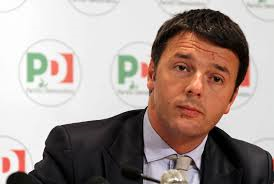 Leading the Italian left has never been an easy task. After the collapse of democratic centralism (i.e. the Leninist practice which obliged the membership to uphold any leader’s decision following an internal discussion), leadership has soon become the Achilles’ heels of the Italian former communists. Party secretaries have been weakened by the rising power of internal factions, used as scape-goats after electoral defeats and blamed for both lack of charisma (Pierluigi Bersani) and excessive protagonism (Massimo D’Alema and especially Matteo Renzi himself).
Leading the Italian left has never been an easy task. After the collapse of democratic centralism (i.e. the Leninist practice which obliged the membership to uphold any leader’s decision following an internal discussion), leadership has soon become the Achilles’ heels of the Italian former communists. Party secretaries have been weakened by the rising power of internal factions, used as scape-goats after electoral defeats and blamed for both lack of charisma (Pierluigi Bersani) and excessive protagonism (Massimo D’Alema and especially Matteo Renzi himself).
Moreover, the presidential leadership style of its eternal enemy, Silvio Berlusconi, made the Italian PD (Democratic Party) rather unenthusiastic toward the trends of personalisation and presidentialisation spreading all over Europe. It is not by chance that the Berlusconian model always comes up when discussing Renzi’s personality and politics. Internal opponents and critical observers denounce Renzi’s simplified language and slogans, as well as his post-ideological appeal and charismatic governance. He is even often described as the son of Berlusconi, in the same way that Tony Blair was once called the son of Thatcher.
Albeit controversial, Renzi’s personalized approach seems to have played a key-role in his rise to power. Studies conducted among the delegates at the 2013 Party Conference show that the party’s majority backed him in virtue of his personal characteristics and leadership skills rather than political message. Moreover, whereas the 2012 delegates expected the at-that-time-leader Bersani to promote a process of identity reconstruction and grassroots’ institutionalization, the 2013 Conference asked Renzi for concrete strategies to win the next General Elections (Martocchia Diodati 2014).
Paradoxically, this has made Renzi’s position quite challenging. He enjoys a large enough majority, had the chance to appoint a fresh, loyal cabinet and has obtained over 40 per cent at the last European Elections, becoming a favourite of the Italian and the foreign press. Nonetheless, many Gordian knots wait to be cut. Italy’s youngest ever Prime Minister has first of all to deal with the distrust of all those who support him in virtue of his eligibility, but do not necessarily share his vision or owe him any personal loyalty. He needs to satisfy extremely high expectations, silence his critics and justify his choices, strategies and style that many within the party have not yet digested. This means generating concrete results as soon as possible: he has tried to do so by engaging with institutional and labour market reforms, all paralysed or watered down by parliamentary and unionist opposition. The way he will cope with this intricate web of political and economic interests remains to be seen.
Besides, the PD still needs to decide what party model it wants to embrace, what relationship it will entertain with the state and society and what role to give to its membership. Even in the era of web politics and liquid organisations, these points are far from banal. The Italian left is witnessing an extreme balkanisation and grassroots’ disaffection. Today, Renzi’s PD is a (not particularly comfortable) home for a number of ideological and interest groups, frustrated activists and local leaders exerting a strong micro-level power (Calise 2013). It is a matter of great urgency to find out what kind of organisational recipe could bring them all together.
Strategy-making is also on the agenda. Renzi’s party needs to prove it is able to repeat its European success at the next General Elections, which means to build a national coalition of interests and constituencies by attracting new supporters while continuing to reassure core left-wing voters. The Prime Minister is attempting to talk to the middle-class and entrepreneurs, but without alienating neither public sector employees nor those on low incomes. Again, the European Elections’ results and the current hostility towards the controversial Job Act present something of a mixed picture: we’ll have to wait and see. In the meantime, the PD is also forced to adjust to its new role as a key pillar in the Italian government, whilst struggling to reconcile its own electoral interests and responsibilities towards the country.
Identity represents the last challenge. Many argue that no contemporary post-ideological, catch-all organisation has a monolithic political culture. One wonders, though, whether a party that has traditionally relied on identity incentives and partisan voting behaviour can work efficiently without a minimal underlying vision and set of common values. So, Renzi calls himself a reformist – but what does reformism mean today? His PD declares to pursue equality and justice – but how does it interpret and enact these principles? It aims at solving the Italian institutional, economic and social crisis – but shouldn’t it come up with more defined political guidelines for how to do this?
Since the collapse of the Keynesian compromise in the late 1970s, the European left has been trying to reinvent social-democracy. Renzi is often compared to Tony Blair, arguably the father of the Third Way. Yet, after 20 years, this vision has revealed its limits and the European landscape has changed dramatically. When building a new and attractive narrative, the PD will have to take these transformations into account. Also, this identity-reconstruction process is unlikely to take place exclusively at a national level and should instead be framed through a transnational dialogue and within a common European platform. The truth is that, despite the undeniable specificities of the Italian political system, many European left-wing parties are nowadays engaging in similar transitional processes. This is why foreign observers should find the recent developments within the Italian PD of great interest and with potential global significance.
References:
Calise, M. (2013) Fuorigioco. La sinistra contro e i suoi leader. Bari: Laterza.
Martocchia Diodati, N. (2014) Leader, policies e voti. Da Bersani a Renzi la trasformazione dell’offerta politica del PD, Convegno Società Italiana di Scienza Politica, Perugia, 11th-13th September.
(This post is a shortened but updated version of the article ‘The Italian Left at a crossroads’, published in Renewal, London: Lawrence & Wishart, in Spring 2014.)






No Comment